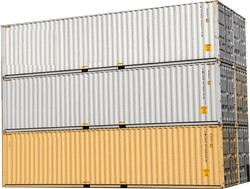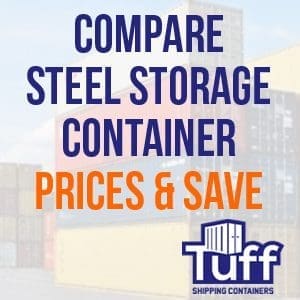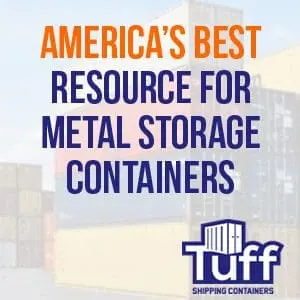
Comparing Different Materials for Shipping Container Manufacturing
Shipping containers have revolutionized the global logistics and transportation industry, providing a standardized and efficient method for moving goods across the world. Traditionally, shipping containers have been made from steel due to their strength and durability. However, recent advancements in materials science and a growing interest in sustainability have led to the development of alternative materials for shipping container construction. In this blog post, we will compare different materials used in shipping container manufacturing and explore their advantages and disadvantages.
Traditional Shipping Container Material: Steel
Steel is the most common material used in shipping container manufacturing. Steel containers are strong and durable, making them ideal for transporting heavy loads. They also provide good protection against weather damage and other external elements, such as dust and dirt. However, steel is more expensive than other materials and can be corrosive when exposed to seawater or certain chemicals.
Strength and Durability:
Steel has long been the go-to material for shipping container construction due to its exceptional strength, durability, and resistance to harsh weather conditions. Steel containers can withstand heavy loads and are designed to last for decades with minimal maintenance.
Corrosion Resistance:
One downside of using steel for shipping containers is its susceptibility to corrosion, especially in humid or coastal environments. To mitigate this issue, steel containers are often coated with corrosion-resistant paint or treated with other protective measures.
Weight and Cost:
Steel shipping containers can be relatively heavy, resulting in higher transportation costs. Additionally, the cost of steel can fluctuate based on global market conditions, impacting the overall price of shipping containers.


Eco-Friendly Shipping Container Material Alternatives: Composite Materials
Composite materials are made by combining two or more materials with different properties to create a new material with improved characteristics. In the context of shipping containers, composites are often used to create lighter, more sustainable alternatives to traditional steel containers.
Advantages of Composite Containers:
- Lighter weight: Composite containers can be significantly lighter than steel containers, reducing transportation costs and fuel consumption.
- Corrosion resistance: Composites are generally resistant to corrosion, eliminating the need for additional protective measures.
- Environmental impact: Composite materials can be manufactured using recycled or renewable resources, making them a more eco-friendly option.
Disadvantages of Composite Containers:
- Cost: The production of composite containers can be more expensive than steel containers, particularly when using advanced materials or manufacturing techniques.
- Limited availability: Composite shipping containers are not as widely available as steel containers, making sourcing and procurement more challenging.
Innovative Material: Aluminum
Aluminum is another material being explored for shipping container manufacturing. While not as strong as steel, aluminum boasts an excellent strength-to-weight ratio, making it a suitable option for certain applications.
Advantages of Aluminum Containers:
- Lighter weight: Aluminum containers are significantly lighter than steel containers, resulting in reduced transportation costs.
- Corrosion resistance: Aluminum is inherently resistant to corrosion, making it suitable for use in humid or coastal environments.
Disadvantages of Aluminum Containers:
- Cost: Aluminum containers can be more expensive to produce than steel containers due to the higher cost of raw materials and specialized manufacturing processes.
- Lower strength: Aluminum containers may not be suitable for extremely heavy loads or certain applications due to their lower strength compared to steel.


Shipping container manufacturing has come a long way since the advent of the traditional steel container. While steel remains a popular choice due to its strength and durability, alternative materials such as composites and aluminum offer potential benefits in terms of weight reduction, corrosion resistance, and environmental sustainability. When considering the appropriate material for shipping container construction, it’s essential to weigh the advantages and disadvantages of each option and determine which material best aligns with your specific needs and priorities.
Cost Comparison: Different Materials and Sizes of Shipping Containers
The cost of a shipping container depends on several factors, including the size and material used. Steel containers tend to be more expensive than composite or aluminum containers due to their higher production costs. Additionally, larger containers generally have a higher price tag than smaller ones due to their increased materials and labor requirements.
Steel Container Costs
- 20-Foot Steel Containers:
Steel containers remain the most common and cost-effective option for shipping container manufacturing. The cost of a new 20-foot steel shipping container typically ranges from $2,500 to $4,000, depending on the quality and location. Used 20-foot steel containers can be purchased for between $1,500 and $3,000.
- 40-Foot Steel Containers:
Larger 40-foot steel shipping containers cost between $4,000 and $6,000 for new containers, while used containers can range from $2,500 to $4,500. As with 20-foot containers, the price depends on quality, location, and availability.
Composite Container Costs
- 20-Foot Composite Containers:
The cost of composite shipping containers is generally higher than their steel counterparts due to the more expensive materials and manufacturing processes involved. A new 20-foot composite container can range from $4,000 to $6,000, while used containers may be priced between $2,500 and $5,000.
- 40-Foot Composite Containers:
For a new 40-foot composite shipping container, expect to pay between $6,000 and $10,000. Used composite containers of this size can cost anywhere from $4,000 to $8,000, depending on their condition and the specific composite materials used.


Aluminum Container Costs
- 20-Foot Aluminum Containers:
Aluminum shipping containers are generally more expensive than steel containers due to the higher cost of raw materials and specialized manufacturing techniques. A new 20-foot aluminum container can cost between $5,000 and $8,000, while used containers may range from $3,000 to $6,000.
- 40-Foot Aluminum Containers:
New 40-foot aluminum shipping containers can range in price from $8,000 to $12,000, with used containers costing between $5,000 and $9,000.
Factors Affecting Container Costs
In addition to the size and material of the shipping container, several other factors can influence the overall cost, including:
- Quality: Higher-quality containers with thicker walls, reinforced corners, and more durable paint or coatings will typically cost more than lower-quality alternatives.
- Customization: Customizing a shipping container with additional features, such as insulation, ventilation, or specialized doors, can increase the cost.
- Location: Prices for shipping containers can vary depending on the location, as transportation and delivery costs will factor into the final price.
When considering the cost of different materials and sizes of shipping containers, it’s essential to balance factors such as durability, weight, and environmental impact with your budget constraints. While steel containers remain the most common and cost-effective choice, alternative materials such as composites and aluminum may offer benefits that justify the higher price tag. By carefully evaluating your specific needs and priorities, you can select the right shipping container material and size to meet your requirements without breaking the bank.

Leave a Reply